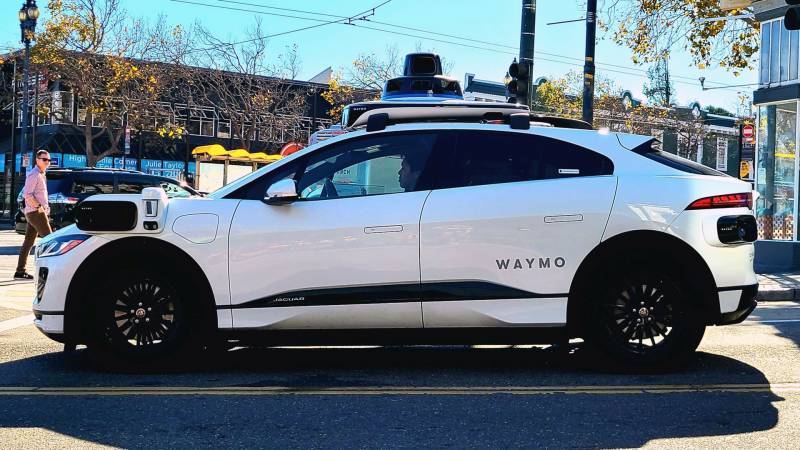Waymo is not the only culprit. Nine AV companies are testing driverless tech in California right now, according to the California Public Utilities Commission. Companies like Cruise, Argo AI and Zoox are competing to crack the automated vehicle market.
Lenore wants to know why more cars are on the road than before. The short answer is that companies developing AVs need data — lots of data — to ensure the cars can handle any driving situation. And, as anybody who has driven in San Francisco can attest, there’s a lot to think about when driving here.
“San Francisco is an incredibly diverse driving environment,” says Sam Kansara, senior product manager for Waymo, which is owned by Google’s parent company, Alphabet. “Part of our increase in presence in San Francisco is about making sure our software and technology can perform well in all of those different environments.”
The AV experiment uses the idea of machine learning. Engineers created an algorithm that continues to get better as the test vehicles collect data. The car “learns” from its experiences driving, building new scenarios into its algorithm and making it more reliable and safer over time. The more miles the cars drive, the more data they collect.
“The key of the algorithms is that in order to be efficient, they need to have a pretty big database of learning examples,” says Alexandre Bayen, director of the UC Berkeley Institute of Transportation Studies. “That’s why you see so many of them collecting that data right now, because we’re not there yet.”
It has been a long road to development for autonomous vehicles. They are certainly more visible on streets today, but AVs have been on California’s roads in one form or another for almost 30 years, beginning in 1997 in San Diego. The HOV lanes on I-15 were closed during the day, which allowed scientists and research engineers like Steven Shladover from UC Berkeley’s California Partners for Advanced Transportation Technology program to run vehicles for “a big public demonstration.” Until then testing had taken place primarily on test tracks.
The technology has evolved from those early years and spawned things like adaptive cruise control — available on many modern automobiles — to cars that can drive themselves.
Are autonomous vehicles safe?
At this point, companies and scientists have been testing AVs on California streets since the 1990s, always with a human operator in the car in case of emergencies. But cars can be deadly, so regulators are being cautious about approving AVs in their current state.
“They’re going to have to have some minimum standards set so that riders who aren’t specialists in this field can be given some reassurance that this is actually a safe system,” says Shladover. He wouldn’t name specific brands but cautioned, “some of the companies that work in this space don’t know what they’re doing.”
